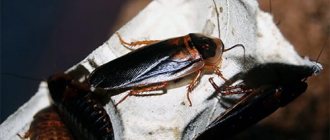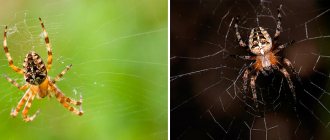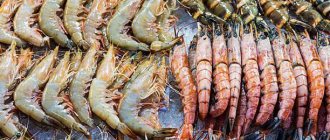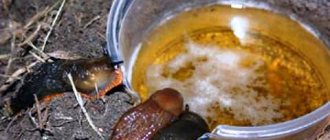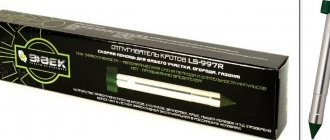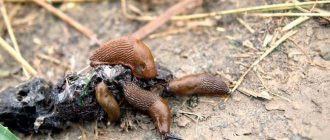Life activity of horse flies: harm and danger
Horseflies cause enormous harm to livestock farming. They are carriers of serious viral and infectious diseases:
- anthrax;
- filariasis;
- tularemia;
- polio;
- trypanosomiasis.
Horseflies most often attack horses and cattle in search of protein food. In rare cases, they attack goats, sheep and pigs. So, against the background of numerous horsefly bites, horses' endurance decreases, and cows' milk production decreases by almost half.
In grazing cattle, non-healing itchy wounds develop at the bite sites, turning into festering ulcers.
For humans, a horsefly bite is not only unpleasant, but also dangerous. A horsefly bite causes swelling and itching in the affected areas, fever, development of purulent inflammation and deterioration of health.
The toxins injected during the bite cause severe swelling and itching.
Favorable habitat and breeding habitat for horseflies are swampy and artificially created reservoirs, as well as rivers, lakes, and streams. A large number of female horseflies live in such places, since females lay eggs near bodies of water. Water is necessary for the growth and development of larvae. Horseflies live in the taiga zone, in forests and forest-steppes.
In arid regions, they inhabit areas where streams and rivers are located.
Where is the best place to place the trap?
A significant point is the choice of location for a homemade trap. The main task is to destroy the maximum number of horseflies and gadflies. Accordingly, one trap is unlikely to be enough in the event of a serious invasion. They should be placed close to heat sources - next to the greenhouse, in front of the house or in open places where the sun's rays are most active.
The reduction in the number of pests will be noticeable almost immediately. Having at least a couple of traps on the site will significantly reduce their population. Females need blood to ripen their eggs, which is why they are the ones most often caught in the bait. The inability to reproduce leads to their gradual destruction throughout the surrounding area.
Important!
Treatment with insecticidal preparations will double the efficiency of the assembled device.
General information about gadflies
Gadflies are parasites of farm animals. Individuals from the order Diptera that are capable of complete transformation. The eggs laid by the female form into a larva, then a pupa and an adult.
Parasites can be hairy and hairless, but the hairs can only be seen up close. The length of the gadflies is from 9 to 25 mm. The botfly larva can develop in the host for about 12 months.
Science knows and has studied 150 species of gadflies. The coloring of individuals may vary and differ depending on their habitat. This is explained by the fact that gadflies are often eaten by birds, and the parasites use their color to camouflage themselves from them.
All larvae of gadflies parasitize the body of mammals, most often ungulates. Gadfly larvae have a body without a head and legs, with 12 segments and belts of chitinous spines. The larva also has two motor openings, large posterior stigmata, and an oral part represented by oral hooks.
The parasite larvae go through two molts and three developmental stages. The larvae in the first two stages are very similar, which makes it practically impossible to distinguish them. In the third stage, the larva leaves the animal's body, turns into a pupa and lives in the ground.
Some types of gadflies are distributed almost throughout the world, for example, the bull gadfly.
What areas attract horse flies?
Favorite places for horseflies in summer cottages are those where all conditions are created for their existence:
- If you raise livestock (horses, dogs, cows and others) at your summer cottage, then horseflies will constantly surround your area, as they feed on the blood of these animals. It is necessary to regularly clean the barn, change the bedding, and destroy any remaining feed.
- Water. These pests are dependent on water. If there is a pool on the site or there is a pond or pond somewhere near the site, then horseflies will feel right at home with you. Maybe you have barrels of water - cover them with a wooden lid, puddles that do not dry out and other places with water. The less moisture in the area, the fewer insects.
- Horseflies lay eggs in the grass. If you decide to start removing horse flies, pay special attention to the grass. If everything is carefully mowed, then the horseflies will have nowhere to lay their eggs, therefore, their “stock” will be significantly reduced. And flying parasites have plenty of their own natural enemies - birds, toads, dragonflies, mantises, which will help you get rid of them.
In order for horseflies to stop bothering you in your home, it is necessary to create conditions in which they will not survive.
Insecticides and DIY traps will help reduce the number of pests.
Note: avoid horsefly bites, as they are carriers of dangerous diseases, such as filariasis, polio and others.
Animal protection
Protecting animals from bites of blood-sucking insects
Domestic animals suffer no less from bites of blood-sucking insects. Due to the fact that there are no specialized means to combat horseflies, drugs with a wide spectrum of action are usually used in animal husbandry practice. These include the following means.
Antifly
An effective remedy for horseflies for cows, which is available in the form of a solution. The active substance in it is cyfluthrin. The drug is not recommended for use in small calves whose body weight does not reach 300 kg. The use of the product is contraindicated if there are scratches or wounds on the skin. The composition is applied in an even layer to the surface of the animal’s skin.
Chlorophos
The white powder, highly soluble in water, is used to combat horse flies and gadflies. For treatment, an 8% composition is used, which is used to treat the body of a cow. The solution is prepared at the rate of 200 g per individual.
Hypodectin
It is an injectable drug that contains ivermectin and excipients. It is administered to the cow subcutaneously in a dose corresponding to the weight and age of the animal. The advantage of this product is the ability to use milk from a treated cow without restriction.
Bayofly pur-on
It is one of the most effective insecticidal and repellent preparations, which is very popular among livestock farmers. It is produced in the form of an oily transparent liquid, which is applied along the cow's spine (no more than 10 mm). The residual effect of the drug lasts for 1-1.5 months, after which re-treatment is necessary.
Butox
Cows and other livestock can also be treated against ticks and horse flies with Butox. It must be diluted with water in accordance with the proportion specified in the instructions. Then treat the animal with the solution using a spray bottle. The effect of the composition lasts for 1-2 days.
Sanofit
Especially from the bites of horseflies and gadflies, the tender parts of the animal’s body suffer, especially the cow’s udder. Sanofit ointment is used for these purposes. It is created on the basis of chlorophyllipt, a mixture of essential oils, camphor and menthol. It is enough to smear the cow’s udder against horseflies with it 2-3 times a day using rubbing movements.
Traps for controlling horseflies
You can make a simple but effective trap using improvised means. You don’t need a lot of intelligence here, you just need to know what horseflies prefer, what they don’t like, and you’re done. They can be:
- Light . These traps have a great effect. Charging comes from a solar battery, less often you can charge from batteries. Horseflies fly towards the bright light that comes from this trap and when the pest lands on it, the horsefly receives an electric shock. By the way, this trap is designed not only for catching horse flies, but also other buzzing insects. You can hang it wherever you want (under a canopy, on the porch or in another convenient place).
- Flycatcher paper. The easiest way to get rid of horse flies in the house, but not in the area itself. Sticky tape is applied to the paper, as a result of which horseflies and other buzzing flies, when they get on the sticky base, stick their paws to it.
- Traps are packages. The device helps to catch not only horseflies, but also flies. Pests easily fly into the bag using the bait, but only a few manage to get out. The rest die inside the package.
Complex design
In places with a large concentration of pests, you can come up with this type of trap: a chair must be hung as high as possible from the ceiling, a dark-colored ball is tied to it, the lower part of the chair should be smeared with glue, or double-sided tape should be glued to the surface.
The system works like this: the ball sways and attracts horseflies and flies with its movement. The insect, having flown up to the ball, realizes that there is nothing edible here and flies upward, where it sticks tightly to the sticky layer. It is necessary to periodically renew the sticky layer.
Artificial puddles
Everyone knows that horseflies are terribly fond of drinking water. When they see a puddle, they dive into it at high speed, swallow a certain amount of water and continue their flight.
It is necessary to pour kerosene or gasoline into the “invented” puddles. When the horsefly dives into the puddle at speed, it will clog its spiracles and die.
Bottle traps
This is a fairly simple method, thanks to which you can make many such traps and place them around the entire perimeter of the site. You need to take a bottle, cut off the neck and grease the edges with vegetable oil, then you need to pour in something sweet (syrup, jam). The cut neck is turned over and inserted inside the bottle. The next step is to wrap everything with tape and thread the rope.
All these traps will not help you exterminate pests enormously, but more victims will fall for the baits you create with your own hands. You should also remember that only adult individuals can be caught with traps. They are unable to destroy larvae and eggs.
Protection from bloodsuckers in nature
When going to the forest or lake in the summer, you must always have a bottle of mosquito repellent with you. Gnus is a general term for all dipterous blood-sucking insects that live among grass, trees and shrubs.
Pharmacies offer a wide range of the most diverse and effective insecticides and repellents that repel blood-sucking insects for a long time and have proven themselves to be “DETA”, “Repekul”, “Benzphthalate”, “Taiga”, “Benzimine”, “Solarol” and others. They are available in the form of aerosols, ointments, emulsions and lotions. However, the effect of all drugs is short-lived. After about an hour, depending on various factors, the smell subsides and the insects begin to attack again. The difference between insecticides and repellents is that the former destroy insects and are extremely toxic, while the latter only repel midges.
Despite the fact that chemical products are very convenient and effective, not all of them are equally safe - most of them contain the poison dimethyl phthalate. This substance is strictly contraindicated for young children and pregnant women. It is better for this category of people to use natural oils of clove, camphor, anise or lavender.
Extermination of insects in the country
Destruction of horse flies
You can fight horseflies with ordinary traps that do not contain insecticides or toxic substances.
Light traps
Modern devices are highly efficient. They operate from a city electrical source, a battery, and rarely on batteries. The trap attracts horse flies with bright light. But, once on the metal rods of the device, the pest receives an electric shock.
On a note!
The trap acts not only on horseflies, but also attracts many harmful insects - mosquitoes, flies, gadflies. In one fell swoop you can clear your summer cottages of many annoying pests. The means for catching pests is placed in any convenient place - under the roof, a canopy, in the veranda, on the terrace, in the yard.
Flycatcher paper
The simplest, most primitive trap. A sticky base is applied to the paper. Suspended under the roof of the house, indoors. An option for those who want to get rid of horseflies in their country house, but not on the plot of land itself. Large-scale transformations will not be possible with such a tool.
Trap packages
Special devices for catching flying insects, especially flies. Hang the bag in a convenient place. Inside there is a bait and an entry hole. Horseflies get inside without difficulty, but only a few get out.
Aerosols and sprays
Sprays and aerosol forms of drugs against flies, gadflies, horseflies and other insects are very popular. Good reviews are found for the following drugs:
- Alezan;
- Akrodex;
- Oksarep;
- Centaur;
- Extrasol;
- Butox.
Using these tools is easy. Just follow the instructions. At the same time, thanks to a convenient sprayer, the liquid mixture is simply distributed over the entire body of a cow, horse, goat, etc. This allows you to create uniform protection for several days (usually no more than 5). The minimum protective action time is a couple of hours, the maximum is a week or even two. Much is determined by weather conditions. For example, in rain it decreases, in dry and windless weather it increases.
Most of the aerosol preparations and sprays are also suitable for treating stalls, barns and other premises. You can apply them to fabric, clothing and equipment (for example, a saddle).
In addition, such aerosols and sprays include both repellents and insecticides. At the same time, they always contain substances with local irritating and allergenic effects. Therefore, you should not allow animals to get into wounds on the skin, mucous membranes of the mouth, nose and eyes during treatment.
Ways to fight
Insects do not live in unfavorable conditions for themselves. Preventing their reproduction on the site is much easier than fighting a cloud of flying individuals.
As preventive measures in the fight against horseflies you need:
- Remove excess grass and shrubs from the area . Insects love to hide in vegetation. Left without shelter, they become easy prey for their natural enemies. Birds, praying mantises, toads and dragonflies feed on horseflies.
- Eliminate pockets of high humidity : drain puddles, eliminate leaks in watering hoses, close containers filled with water with lids, etc.
- Clear the area of debris, heaps of humus and manure . In livestock housing, it is necessary to maintain dry bedding and remove any leftover feed.
- Treat compost heaps and yard toilets with special preparations.
Chemicals
Insecticides are considered the most effective means of killing insects.
The most commonly used drugs are:
- organophosphorus;
- chlorine-containing;
- pyrethroids.
All these agents have a wide spectrum of action. They must be used to control insects following the precautions and dosage specified in their instructions. Treating areas with chemicals against horseflies also leads to the death of harmless insects such as ladybugs and bees.
Insecticides can also pose a danger to animals. Pets walking in areas treated with chemicals are at risk. For example, cats licking their paws after a walk or poultry pecking at grass poisoned by drugs.
After treating the area with chemicals, it is necessary to limit access to it for humans, domestic animals and birds for some time.
When working with drugs, you need to follow simple safety rules:
- use personal protective equipment when working;
- Do not spray chemicals near water or animal feed.
Expert opinion Mityuk Stefania Bogdanovna The effect of the drugs after treatment can last up to 1 month.
Organophosphorus agents
When drugs of this type enter the body of an insect, they cause poisoning of the body and death. To combat horseflies, the following are most often used: dichlorvos, karbofos and tetraphos. These are the most affordable and effective means. They have a nerve-paralytic effect and leave no chance for horseflies to escape.
Pyrethroids
The drugs are used to kill insects at the stage of laying eggs and turning them into larvae. The most popular means for combating horseflies from this group are bioalletrin and fenvalerate. They are used for processing areas in autumn and spring. Moist soil and vegetation are treated with drug solutions. They have a paralyzing effect and do not pose a danger to warm-blooded animals.
Chlorine-containing products
The drugs are used to protect cattle from horse flies. They have a low degree of toxicity and do not pose a serious threat to livestock and humans. They are used to destroy subcutaneous larvae. Products are used to disinfect skin affected by insects. The most commonly used for these purposes are lindane, chlorvinphos and methoxychlor.
Animal protection
Since it is not always possible to get rid of all horseflies using a trap alone, especially when there is a large concentration of them, it is therefore sometimes possible to treat the animals themselves with a chemical preparation. The insecticide should be poured into a sprayer and distributed evenly over the animal’s body. It happens that horses and cows get scared of the spray bottle; in such cases, the drug can be applied to their body using a sponge. Do not forget to wear rubber gloves when working with the product and avoid any contact of the insecticide with the skin.
On a note! Expert opinions regarding the use of chemicals directly on animals are mixed, since due to short contact with insects they may not bring the expected result. There are, of course, more effective chemical insecticides - based on DEET, but it should be borne in mind that they can dissolve plastic, so they can cause serious harm to animals!
In order to make life easier for livestock and horses without the use of hazardous substances, it is enough to follow the following rules:
- the places in which they are located must always be clean - periodically remove manure, clean channels for drinking water and replace the old flooring with a new one;
- do not pour drinking water for animals into buckets and basins; it is better to ensure that there are good drainage systems - this way you can avoid stagnation of water;
- if there is a pond or swimming pool near places where animals are constantly located, then during the period of active movement of horse flies, try to cover them with film;
- periodically mow tall grass - this way insects will be deprived of cool, damp places for breeding;
- try to ensure that the animals are constantly under shady shelters - most often they suffer from insect attacks on the street, so on a hot day they will be more comfortable in a closed stable or barn;
- If possible, put nets on the ears of horses and cows, protect their faces with masks, you can also hang special tapes that repel bloodsuckers directly on the body;
- castration is carried out exclusively in winter - at this time there are practically no horseflies and they will not irritate the animals’ already painful wounds.
Territory defense
How to get rid of horse flies on the site? To treat the area, it is allowed to use any chemical from the list above. Before applying insecticide, all animals should be removed from the barn. Cattle may need to spend some time outdoors after treatment. In short, read the instructions.
The drug is sprayed into the barn, treating all surfaces: walls, rafters, floor, ceiling and cornices. When using the sprayer, make sure that the drug comes out under low pressure. In this case, be extremely careful and try to ensure that the product does not get into drinking water and food. In addition to the barn, it is also advisable to treat the surrounding area, and the more square meters you spray, the longer the effect will last.
To combat horseflies, you can also use folk remedies. The most common is a solution of liquid soap. To prepare it, dilute a couple of glasses of liquid soap in 9 liters of water. The prepared preparation is sprayed onto horseflies and after a while they die.
The second product is used to spray the area. For this you will need mint mouthwash, lemon soap and lemon ammonia. The components must be mixed in approximately equal proportions and the area treated.
Traditional methods
The methods are used more often as preventative measures to combat insects. They effectively repel horseflies from summer cottages, are accessible and economical.
The most common of them are:
Aqueous solution of laundry soap and vegetable oil
The product is absolutely safe for humans, animals and poultry. To prepare the solution, take a bar of laundry soap and 150 ml of vegetable oil per 1 liter of water. This product can be used to spray the body of horses, pigs and cows. In dacha areas, the solution is used to treat greenhouses, livestock pens, outbuildings, greenhouses and house porches.
A mixture of cheap cologne and clove powder
Before use, the solution is infused in a cool place protected from direct sunlight for at least 10 days. Using a spray bottle, it is sprayed onto plants, clothes, equipment, a fence, and a porch.
Decoction of mint, lemon and orange
The aroma of the finished decoction is enhanced by 2-3 teaspoons of essential oils. The proportions of ingredients are chosen arbitrarily. The main thing in preparing this remedy is to get a decoction with a strong odor. The area treated with this product will be avoided by horseflies.
Traps are an equally effective means of controlling insects. The simplest of them are containers with water, kerosene or diesel fuel. They are placed around the site. Flying over water, horse flies plunge their entire bodies into it. A layer of diesel fuel or kerosene on the surface of the water will not give them the opportunity to get out, and they will die.
Clove powder with cologne
Cloves, or more precisely, the oil from the spice, are an effective means of combating annoying insects. The action is ensured by the content of substances such as eugenol, caryophyllene, terpenes, and aldehydes. Recipe:
- Grind the clove sprigs into powder.
- Dilute in cheap cologne.
- Leave to infuse for 10 days.
Gadflies and horse flies do not like the pungent aroma; it repels these insects. Cologne is needed to enhance the smell and release clove oil. Additionally, the mixture is used to treat skin after insect bites.
Interesting! Clove oil relieves pain, heals wounds, relieves inflammation, and exhibits antiseptic properties.
Tar
A time-tested method of repelling pests. Tar exhibits a pronounced specific aroma. To protect against gadflies and horseflies, an oil solution is required, which is rubbed into open areas of the skin. When spending a long time in nature, it is recommended to update the layer every 3 hours. Tar is difficult to remove from the skin, so you need to visit the bathhouse in the evening or rinse off the product under hot water.
Vishnevsky ointment
This pharmaceutical product is used to lubricate ankles and hands. The composition includes castor oil, tar with xeroform. The consistency of the ointment is quite greasy, so it is not recommended to touch clothes. The smell is unpleasant for pests. Application option: lubricate a piece of bandage with liniment, then wrap it around the hand or open area of the ankle.
Lemon-mint mixture
To treat the area, a mixture of mint-scented mouthwash, lemon oil and soap solution is recommended. The pungent smell will repel annoying insects. Preparation of the product:
- Dissolve a bar of lemon scented soap in 4.5 liters of water.
- Add a bottle of mouthwash and a bottle of lemon oil.
- Mix the ingredients and treat the area.
Blood-sucking insects are repelled by mint, orange, and lemon aroma. Instead of the presented product, it is also allowed to use a decoction of fruit peels, plant leaves, and essential oils.
Smelling plants
To protect your dacha or home area, it is recommended to plant special shrubs and herbs that emit a specific smell. These plants are placed around the perimeter, next to the beds. Examples of shrubs and grasses to repel pests:
- wormwood;
- common bird cherry;
- pharmaceutical chamomile;
- white sweet clover;
- common toadflax;
- anise, basil, cloves;
- ordinary tansy.
Plants that are poisonous to humans, but useful for protection against horseflies or gadflies: black hellebore, marsh wild rosemary, herbaceous elderberry. Coniferous trees help against pests, from which you can prepare infusions and decoctions for treating the area.
DIY traps
A physical method of getting rid of pests is a trap for horseflies and gadflies. You can buy the devices at the store or make your own. The products have one task - to attract large insects.
5 best baits: DIY wasp trap
Interesting! A simple trap option is adhesive tape, which is usually used to kill flies. Plus - the possibility of placement around the perimeter of the room and premises or along doorways on jambs. Disadvantages: frequent changes, low efficiency.
Instructions for creating a homemade trap:
- Take wooden blocks or legs.
- Secure the plastic basin.
- Fill with prepared soap solution.
- Cover with a black garbage bag.
- Place 2 sheets of plexiglass above the assembly at an angle of 45 degrees.
The principle of operation of this DIY trap for horseflies and gadflies is that insects tend to a black surface, hit a plexiglass sheet, fall into a soapy solution, and die.
On a note! The second version of a homemade trap is thick cardboard, on the surface of which a special adhesive mass is applied. You will need to take a product that can deter large insects.
Insecticidal lamps
An effective method of protection is insecticidal lamps. The principle of operation is that gadflies and horse flies actively fly towards the light. When they get close, an electrical discharge occurs that kills them. The lamp operates on an area of up to 150 square meters. meters. They place devices in warehouses, offices and shops, in house and summer cottage areas. The average price is from 2 to 7 thousand rubles, which is not too expensive for such a product.
Special traps
Ready-made insect traps are widely available in the trade. For horse flies and gadflies there are special modifications of these products:
- With bait . They are made in the form of a shiny, dark ball impregnated with attractants. The specific smell of these substances attracts horse flies. Once in the ball, they stick to its surface and cannot get out. The advantages of traps of this type are the possibility of repeated use and long service life.
- Trap packages . Designed for installation in open areas. They can be used no more than once. After the trap is filled with insects, it is burned.
- Illuminated traps . The structures are equipped with an ultraviolet lamp. Its light attracts the attention of insects. They fly towards him and end up in a special chamber-trap. After it is filled with insects, the chamber is pulled out of the trap and filled with hot water. In some models, insects die in a trap under the influence of electric current.
- Fan traps . The principle of catching insects is based on the suction effect. The trap imitates the respiratory functions of a living creature. She radiates warmth. Horseflies, unable to distinguish objects, mistake the structure for a person or animal. They willingly fly towards traps and fall into a trap in the form of a net or chamber.
Repellers
Ultrasonic devices can force horseflies to fly around a summer cottage. They imitate the sounds of male insects. It is recommended to install such repellers within a radius of 20-30 m from the place where cattle are kept and human habitation.
How to treat a cow against gadflies and horse flies
Means for such a fight can be divided into several types:
- The use of repellents helps repel insects. As a result, they should stop approaching cattle.
- The action of insecticides is organized in a different way. They are designed to kill blood-sucking insects.
On a note! This need arises with the onset of a warm period. If this is not taken care of in time, it is never too late to take the necessary measures.
In addition to those mentioned, you can consider medications that help fight itching after a bite. Some means are indirect. These include the need to comply with appropriate hygiene rules for cattle.
Folk remedies can also be used in this area, but their effectiveness is less than that of repellents from a veterinary pharmacy.
How to treat a cow against gadflies and horse flies
In this capacity the following can be used:
- Diesel fuel.
- Processing with machine oil.
- Birch tar.
- Some other products that, when applied, have a strong odor that repels insects.
Their validity period is such that they can only be used as long as they retain a strong and pungent odor.
Interesting! Here's how to treat cattle against gadflies: tar can be purchased at a pharmacy, or you can also go to a specialized store for this. Typically, an oil or water solution is used to control insects. To apply it, use a sprayer.
There is another form of its use. If animals are bathed with tar soap, this can also help in the fight against blood-sucking insects. This could be a fly repellent for cows.
However, the option under consideration has an unpleasant side effect: if tar was used, this may affect the formation of the appropriate flavor in the milk.
Additionally, this horsefly remedy for cows only works for a very limited time. As a rule, no later than four hours later, the effect of using tar disappears.
To combat insects, some farmers use diesel fuel. This product is effective due to its pungent and unpleasant odor. Unfortunately, if applied, the smell affects not only the flying bloodsuckers, but also the cow itself. Due to this circumstance, it is not recommended to use diesel fuel too often for this purpose.
On a note! Typically, this substance is coated on various areas of the skin of cattle. It is believed that it is necessary to treat only that part of the body where the cow cannot fan herself with her tail. This is how you can treat cows against gadflies.
The listed folk remedies have an important drawback: it is not recommended to smear the udder with them. Here is an example of a folk remedy that can help in this case: for this purpose, it is recommended to mix one part of shampoo with two parts of vegetable oil. At the same time, you can take any shampoo and oil that you have in the house. Instead of shampoo, if it is more convenient, it is permissible to use bath foam.
Important! You need to mix thoroughly. It is necessary to obtain a homogeneous mass with which the cows will be processed. This mixture can be used to lubricate the entire animal and, in particular, the udder.
After the cow comes from the pasture, you need to wash off the composition with warm water.
This mixture can be used to lubricate the entire animal and, in particular, the udder. After the cow comes from the pasture, you need to wash off the composition with warm water.
The effectiveness of the method in question is approximately 80-90%. The composition repels gray horse flies, yellow flies, mosquitoes, midges and other insects. It is not very effective against botflies, but they bite during the hottest period of the day, and during the morning and evening hours they usually do not fly. This solution should be smeared on the udder, on the face, behind the ears, “under the armpits” of the cow. Some people add vinegar to this composition, which increases the effect of this product.
Sometimes there is a need to soften the consequences of a bite and remove the itching. In this case, the following procedure may help:
- The bite site is smeared with honey.
- Cover with cabbage leaf.
- Wrap in cellophane.
On a note! This remedy not only softens the effects of bites, but also helps soften the skin of the udder during mastitis.


